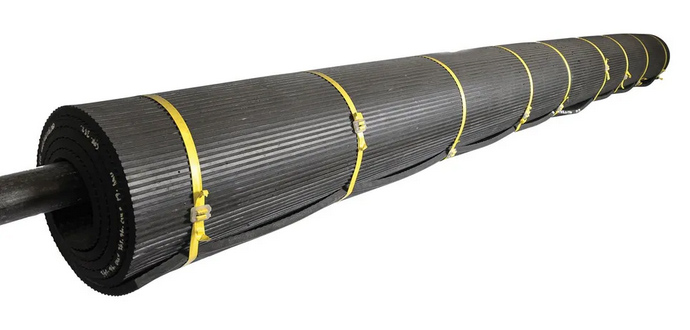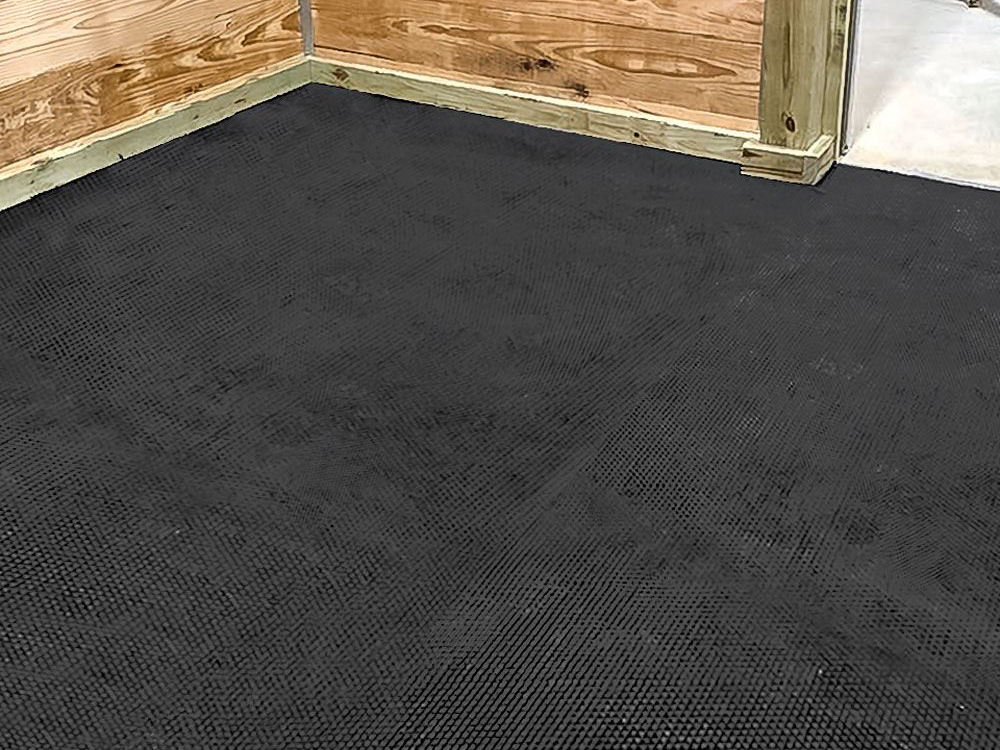
For those deeply involved in the equine world, ensuring the welfare of your horse is not merely a responsibility, it’s a passion. One aspect of this care is the stall environment. The debate regarding stall mat options — large, one-piece stall mats versus individual 4′ x 6′ mats — has been ongoing. This comprehensive guide seeks to provide an in-depth look into the benefits of the larger one-piece stall mat, offering a holistic view of its advantages.
1. Seamless Coverage:
A. Fewer Tripping Hazards:
One-piece mats, due to their seamless nature, offer an uninterrupted surface. Over time, the edges of segmented mats may curl or lift, posing tripping hazards. Trips and falls can be risky not just for horses, but also for caregivers, riders, and visitors. Safety should always be the topmost priority in equine care, and a one-piece mat significantly minimizes such risks.
B. No Gaps:
Segmented mats, especially with frequent usage, may shift. As they drift apart, gaps appear between segments. The horse’s hoof, especially of a playful or restless horse, can get caught in these spaces. Such situations can cause injuries, both minor and severe. One-piece mats eliminate this risk, ensuring your horse’s hooves remain safe.
The use of separate mats often leads to the issue of bedding becoming displaced and wedged within the seams, consequently causing the edges of stall mats to uplift and separate. This dilemma unfolds as an enduring struggle, requiring consistent attention and effort to rectify.
2. Durability and Longevity:
A. Less Wear and Tear:
When stall mats are segmented, their edges often bear the brunt of wear and tear. With repeated hoof traffic, especially along the seams of these individual mats, the wear tends to be uneven. In contrast, the one-piece mat experiences uniform wear across its surface, potentially giving it a longer lifespan.
B. Reduced Movement:
The size and weight of a single large mat make it more stable. Individual mats can shift due to the movement of the horse, or even just during routine cleaning. Such constant movement can accelerate the wear and tear process. In contrast, a one-piece mat stays firmly in place, ensuring durability.
3. Hygiene and Sanitation:
A. Urine Smell
With individual mats, urine and/or feces and get between mats, where it accumulates and stagnates beneath the surface and gives rise to an offensive odor that has the potential to permeate and saturate the entire barn. The pooling and festering of excrement in this hidden space generates a malodorous atmosphere that can greatly diminish the overall quality of the equine environment. The noxious scent, once established, has the capacity to diffuse and linger, affecting not only the comfort of the horses but also the overall ambiance within the barn. Non-porous, 1 piece mats keep the urine up with the rest off the bedding making for effective mucking and disposal of urine and feces.
B. Bacteria and Fungus
The accumulation of urine, feces, and moisture-soaked bedding that becomes trapped between and beneath separate mats fosters an environment conducive to the proliferation of bacteria and even fungal growth. This scenario poses a significant risk of health complications for both equines and their attendants. The ramifications of such conditions are particularly paramount in the context of veterinary clinics, where maintaining the utmost sterility is essential for ensuring the well-being of animals under care.
4. Ease of Cleaning and Maintenance:
A. No Accumulation of Waste:
One common challenge with segmented mats is the seepage of urine, water, and other waste materials through the seams. This waste can accumulate underneath the mats, fostering the growth of mold and bacteria, and releasing unpleasant odors. Cleaning such accumulated waste is not only challenging but also time-consuming.
B. Simplified Cleaning Routine:
The smooth and continuous surface of one-piece mats makes cleaning a breeze. Whether you’re sweeping, mopping, or hosing it down, the process is straightforward. Moreover, with no segments to lift and realign, the maintenance process becomes less cumbersome.
5. Enhanced Comfort and Support:
A. Uniform Cushioning:
Every horse owner wishes to provide the utmost comfort to their equine companion. A segmented mat may not offer uniform cushioning due to gaps or misalignments, whereas the one-piece counterpart guarantees consistent padding. This is particularly essential when the horse lies down.
B. Improved Insulation:
In colder regions, insulation from the ground’s cold can be a determining factor in a horse’s comfort. A continuous mat, being devoid of gaps, provides superior insulation, ensuring your horse’s comfort throughout varied seasons.
6. Aesthetic Appeal:
A. Sleeker Look:
Beyond functionality, there’s an undeniable aesthetic aspect to consider. A one-piece mat lends a tidy and cohesive look to the stall, enhancing its overall visual appeal.

B. No Misalignment:
Over time, shifting individual mats may become misaligned, creating an unsightly and uneven surface. With a single piece, you’re ensured a consistently neat appearance and functionality.
7. Cost-Efficiency in the Long Run:
A. Fewer Replacements:
Given the durability and longevity of one-piece mats, you might end up replacing them less frequently than individual matting pieces. This saves you not only the cost of the mat, but the labor to remove the old mats and install the new ones, disposal cost, shipping costs, and headache.
B. Reduced Maintenance Costs:
The reduced need for addressing problems like waste seepage or realigning individual pieces can save on maintenance labor and associated costs over time.
Addressing Potential Drawbacks and Solutions:
Like every product, large one-piece stall mats have challenges. However, understanding these challenges can help horse owners make informed decisions.
- Weight and Maneuverability: A significant hurdle can be the weight and unwieldiness of a single, large mat. While it’s a concern, the infrequent need to move or adjust the mat makes it a manageable one-time challenge.
- Initial Investment: The upfront cost of a one-piece mat might be significantly higher. However, weighing this against the long-term benefits — durability, reduced replacements, sanitation and savings on maintenance — often reveals it to be a cost-effective choice in the long run.
Conclusion
Equine care is intricate, and the choice of stall matting can have far-reaching implications for both the horse and the owner. While individual 4′ x 6′ mats may appear convenient, the numerous benefits of a large, one-piece stall mat are hard to ignore.
Its enhanced durability, ease of cleaning, uniform cushioning, aesthetic superiority, and long-term cost-efficiency make it a worthwhile investment. For those passionate about providing the best for their equine companions, understanding the full scope of these benefits can lead to a well-informed stall matting decision.
